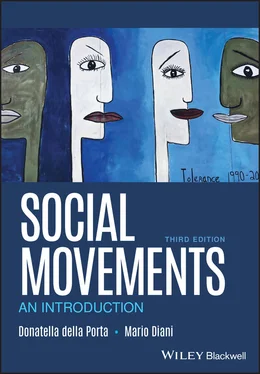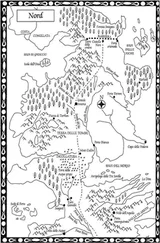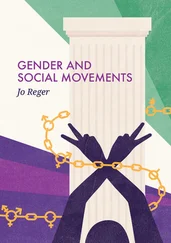In America, collective action was often seen as crisis behavior. Having reduced collective phenomena to the sum of individual behaviors, psychologically derived theories defined social movements as the manifestation of feelings of deprivation experienced by individuals in relation to other social subjects, and of feelings of aggression resulting from a wide range of frustrated expectations. Phenomena such as the rise of Nazism, the American Civil War, or the movement of black Americans, for example, were considered to be aggressive reactions resulting either from a rapid and unexpected end to periods of economic well‐being and of increased expectations on a worldwide scale; or from status inconsistency mechanisms (Davies 1969; Gurr 1970). From a somewhat different but compatible point of view, the emergence of political extremism was also associated with the spread of mass society in which integrative social ties based in the family or the community tended to become fragmented (Gusfield 1963; Kornhauser 1959). Isolation and displacement produced individuals with fewer intellectual, professional and/or political resources, who were particularly vulnerable to the appeal of antidemocratic movements of the right and the left.
To some extent, these problems were shared by the most famous version of structural‐functionalist approach, that of Neil Smelser (1962), that saw social movements as the side effects of overrapid social transformation. According to Smelser, in a system made up of balanced subsystems, collective behavior reveals tensions which homoeostatic rebalancing mechanisms cannot absorb in the short term. At times of rapid, large‐scale transformations, the emergence of collective behaviors – religious cults, secret societies, political sects, economic Utopias – has a double meaning, reflecting on the one hand, the inability of institutions and social control mechanisms to reproduce social cohesion; on the other, attempts by society to react to crisis situations through the development of shared beliefs, on which to base new foundations for collective solidarity.
Smelser’s value‐added model of collective behavior consists of six steps: structural conduciveness, i.e., a certain configuration of social structure that may facilitate or constrain the emergence of specific types of collective behavior; structural strain, i.e., the fact that at least some trait of the social system is experienced by a collectivity as a source of tension and problems; growth and spread of generalized belief, i.e., the emergence of a shared interpretation by social actors of their situation and problems; precipitating factors, i.e., stressful events that induce actors to take action; mobilization, i.e., the network and organizational activities that transform potential for action into real action; operation of social control, i.e., the role of social control agencies and other actors in shaping the evolution of collective behavior and its forms (see also Crossley 2002, p. 2; Smelser 1962).
Some scholars regard as unfortunate that Smelser’s work came out at the time it did, thus ending up being strongly associated with the crisis of the functionalist paradigm. Despite its problems, his was a major attempt to connect into an integrated model different processes that would have later been treated in sparse order, and to firmly locate social movement analysis in the framework of general sociology (Crossley 2002, p. 53–55). Whatever the case, Smelser’s approach came to be subsumed under the broader set of approaches viewing social movements as purely reactive responses to social crisis and as the outcome of malintegration, and became the target for the same criticisms. Let us see now how the criticism of Marxist and functionalist approaches were elaborated in relation to the four questions we have identified earlier, but also how those answers where themselves challenged later on.
1.1.1 Is Social Change Creating the Conditions for the Emergence of New Movements?
Given the importance of Marxism in European intellectual debates, it is no surprise that European social sciences were the most eager to explain the rise of the movements of the 1960s and the 1970s in explicit critique of the Marxist models of interpretation of social conflict. Criticism addressed both the most structuralist currents of Marxist thinking, deriving class conflict directly from the mode of production, and those interested in the formation of class consciousness (or class for itself ). Certainly, scholars of the new movements were not the only ones to be aware of these problems. The same difficulties had been raised by those who had studied the labor movement with the aim of explaining the formation of a collective actor, challenging the widespread idea of an almost automatic transformation of structural strains in conscious behavior (Thompson 1963).
Departing often from a Marxist background, scholars associated with the new social movements approach made a decisive contribution to the development of the discussion of these issues by reflecting upon the innovation in the forms and contents of contemporary movements.
Scholars of new movements agreed that conflict among the industrial classes was of decreasing relevance, and similarly that the representation of movements as largely homogeneous subjects was no longer feasible. However, there were differences of emphasis in relation to the possibility of identifying the new central conflict which would characterize the model of the emerging society, defined at times as postindustrial, post‐Fordist, technocratic, or programmed . An influential exponent of this approach, Alain Touraine, was the most explicit in upholding this position: “Social movements are not a marginal rejection of order, they are the central forces fighting one against the other to control the production of society by itself and the action of classes for the shaping of historicity” (Touraine 1981, p. 29). In the industrial society, the ruling class and the popular class oppose each other, as they did in the agrarian and the mercantile societies, and as they will do, according to Touraine, in the programmed society, where new social classes will replace capitalists and the working class as the central actors of the conflict.
The break between movements of the industrial society and new movements was also stressed in the 1980s by the German sociologist Claus Offe (1985). In his view, movements develop a fundamental, metapolitical critique of the social order and of representative democracy, challenging institutional assumptions regarding conventional ways of “doing politics,” in the name of a radical democracy. Among the principal innovations of the new movements, in contrast with the workers’ movement, are a critical ideology in relation to modernism and progress; decentralized and participatory organizational structures; defense of interpersonal solidarity against the great bureaucracies; and the reclamation of autonomous spaces, rather than material advantages.
Another contribution to the definition of the characteristics of new movements in the programmed society came from Alberto Melucci (1989, 1996). Drawing on the image proposed by Jürgen Habermas of a colonization of lifeworlds, Melucci described contemporary societies as highly differentiated systems, which invest increasingly in the creation of individual autonomous centers of action, at the same time as requiring closer integration, extending control over the motives for human action. In his view, new social movements try to oppose the intrusion of the state and the market into social life, reclaiming the individual’s identity and the right to determine his or her private and affective life against the omnipresent and comprehensive manipulation of the system. Unlike the workers’ movement, new social movements do not, in Melucci’s view, limit themselves to seeking material gain, but challenge the dominant notions of politics and of society themselves. New actors do not so much ask for an increase in state intervention, to guarantee security and well‐being, but especially resist the expansion of political‐administrative intervention in daily life and defend personal autonomy.
Читать дальше












